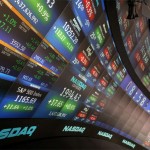 I’ve written a few times in recent weeks about the rise of automated decision support systems that use algorithms to guide our choices.
I’ve written a few times in recent weeks about the rise of automated decision support systems that use algorithms to guide our choices.
Such innovations are part of a wider zeitgeist that chips away at the value of experts. This began a decade ago with the popularization of The Wisdom of Crowds, but has since become a little more widespread.
One popular example of this in action was an experiment that looked at the performance of professional fund managers against both amateurs and tracker funds.
Lo and behold, the fund managers didn’t perform well at all, with the cabal of experts under performing the wider market by around 70 percent.
Given the apparently poor performance of experts therefore, would you be more willing to trust your finances to an algorithm?
That’s a question that is increasingly being asked, given that algorithmic traders are able to act both dispassionately and rationally, whilst doing so at a fraction of the cost of a human expert.
The rise of the machines
Such automated traders are increasingly popular, with around $4 billion worth of assets currently under management by such services.
Whilst this is still small cheese compared to the trillions invested globally, it’s growing incredibly quickly, with the potential to significantly disrupt the industry.
“This is a more meaningful crop of disruptors than we’ve seen for many years, really since the Internet brokerages emerged,” financial expert Bill Doyle said recently.
Interestingly, it seems like the larger financial firms are beginning to take note and launching similar products themselves, taking what was a niche product more into the mainstream.
Charles Schwab, for instance, have recently launched an Intelligent Portfolios product, which, if nothing else, will bring a lot of credibility to the approach.
Whether they will ever provide the comfort and security required to tempt small, irregular investors that want low risk solutions however is harder to say.
Many will no doubt want to retain the hand holding approach offered by a human advisor, especially as research has found that we tend to hold automated decision support to much higher standards than we do human decision support.
It’s during heated moments, such as when markets are slumping, that having someone to talk to can be most valuable. There are attempts however to automate even this level of service.
For instance, if the user is logging on excessively, the system can make the assumption that tensions are rising and try and provide extra information to calm them down.
With the automated trading sector raising nearly $300 million in venture funding last year, it’s certainly an area that needs keeping an eye on.
This is inevitable I think. Take the emotion out of things and trade coldly and rationally.
Yes, indeed. A few years ago the Foresight department of government released a report on automated trading. It might make interesting reading
https://www.gov.uk/government/publications/future…
The Federal government warns there are a lot of Forex frauds out there, and these Forex robots appear to be one type of these scams. If these robots really worked, there would be scads of articles about them in the Wall Street Journal and other financial publications talking about them.
Liquidity is the ability of an asset to be converted into cash quickly and without any price discount. In forex this means we can move large amounts of money into and out of foreign currency with minimal price movement. The forex market has no restrictions for directional trading.